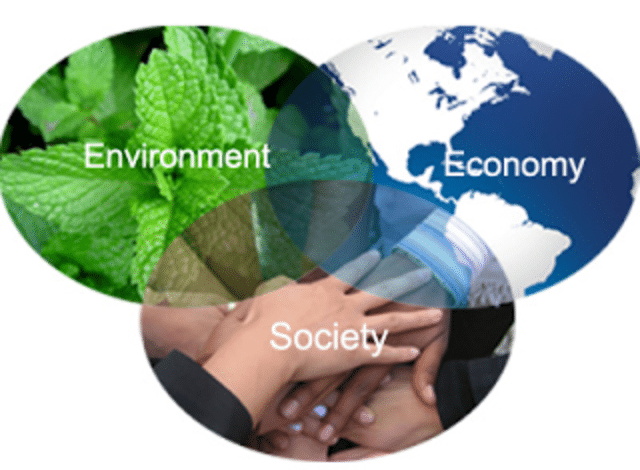Technology
Life on the Road – What is Your Net Worth?

Experts in transportation and travel have long held that air travel is by far the safest form of getting around, and that if you really fear for your life, don’t cross the road or ride in – or on – a vehicle. The latest statistics for fatalities in both areas, in an aircraft and on the road, confirm this opinion as definitely winning the day.
In 2015, official statistics show that there were 121 aircraft accidents around the world, resulting in 898 deaths, those from a world population of around seven billion. Of course the more serious losses of life as a result of an accident involving a large commercial aircraft crashing – or disappearing – gain enormous publicity, but the overwhelming majority of accidents and fatalities occur in private, business and sport flying, small aircraft often carrying less than 10 passengers. Incomplete statistics which don’t include short, local ‘hops’, calculate that there are more than 100,000 flights around the world everyday – so your chances of being killed flying commercially are one in 2,925,000, or 0.019 per 100,000.
Conversely, the number of fatalities as a result of accidents on the road is really horrific. Latest estimates are that more than 1.25 million people are killed on the world’s roads every year, an average rate of 19.1 per 100,000. Of course, the skies are (relatively) clear and conditions generally consistent, whereas roads vary enormously in quality of construction and density of use, but then – how seriously are road rules followed, and laws policed? In the air, rules and behaviour are much more rigidly enforced. Regardless, you are one thousand times more likely to be killed on the road than in an aircraft accident.
So, where are the world’s real black spots on the road, and which countries have the best road safety record? Unsurprisingly, Africa ‘boasts’ 12 of the 15 most dangerous roads, and Europe 10 of the safest 15. Statistics listed below are per 100,000 of the population.
[one_half]MOST DANGEROUS[/one_half][one_half_last]SAFEST[/one_half_last]
[one_half]15. Dominican Republic – 29.3 [/one_half][one_half_last]15. Ireland – 4.1[/one_half_last]
[one_half]14. The Gambia – 29.4[/one_half][one_half_last]14. Norway – 3.8[/one_half_last]
[one_half]13. Burkina Faso – 30[/one_half][one_half_last]13. Spain – 3.7[/one_half_last]
[one_half]11.= Sao Tome & Principe – 31.1[/one_half][one_half_last]11.= Singapore – 3.6[/one_half_last]
[one_half]11.= Togo – 31.1[/one_half][one_half_last]11.= Israel – 3.6[/one_half_last]
[one_half]10. Mozambique – 31.6[/one_half][one_half_last]9.= The Maldives – 3.5[/one_half_last]
[one_half]9. Rwanda – 32.1[/one_half][one_half_last]9.= Denmark – 3.5[/one_half_last]
[one_half]8. Iran – 32.2[/one_half][one_half_last]8. Netherlands – 3.4[/one_half_last]
[one_half]7. Central African Rep – 32.4[/one_half][one_half_last]7. Switzerland – 3.3[/one_half_last]
[one_half]6. Tanzania – 32.9[/one_half][one_half_last]6. San Marino – 3.2[/one_half_last]
[one_half]5. Democratic Rep of Congo – 33.2[/one_half][one_half_last]4.= UK – 2.9[/one_half_last]
[one_half]4. Liberia – 33.7[/one_half][one_half_last]4.= Kiribati – 2.9[/one_half_last]
[one_half]3. Malawi – 35[/one_half][one_half_last]3. Sweden – 2.8[/one_half_last]
[one_half]2. Thailand – 36.2[/one_half][one_half_last]2. Micronesia – 1.9[/one_half_last]
[one_half]1. Libya – 73.6[/one_half][one_half_last]1. Monaco – 0[/one_half_last]
The World Health Organisation has also collated the following figures, based on fatalities per 100,000 vehicles:
[one_half]
Africa 57
Eastern Mediterranean 139
South-East Asia 101
Western Pacific 69
America 33
Europe 19
[/one_half_last]

Economy
Quality Of Life – Net Worth!?

So in terms of quality of life, just how rich are you? What is your real net worth, your wealth, and not simply in money? How hard do you have to work to satisfy your need for what you want out of life? Perhaps as important – how many years are you likely to live for, to enjoy your hard-earned riches?
Firstly, how is quality of life assessed, and secondly, how many hours a year do you need to work to earn this standard of living? A third – but immeasurable – factor could be priorities in what any person regards as important to his/her quality of life; perhaps you are happy to have little disposable income left after paying essential expenses, if it means working fewer hours but spending more time with family and friends. Or perhaps you are asset rich but time poor? For example, Americans are generally regarded as ‘rich’, but only five countries’ populations work longer hours, and the USA’s standard of living is only in the middle of the table. So maybe you will live a little longer, because you haven’t needed to work too hard.
Quality of Life Index is estimated by the OECD using a formula which includes purchasing power, health care, climate and safety indexes – the higher the better – and house price to income ratio, consumer price, pollution and traffic commute time indexes, the lower the better, all given weightings according to assumed importance.
Hours worked on average per year is the other side of the coin – a person may well have a relatively high income coupled with low or moderate expenses, but how much time is left for the person to enjoy his or her relative wealth? In the longer term, years of life expectancy depend on many factors, the most influential being diet and availability of medical care, except of course the negative effects of protracted conflict in which the country may be directly involved, perhaps partly borne out by Switzerland topping the list for quality of life – it managed to remain neutral during the two World Wars.
Efficiency would appear to be the key – that is, if the number of hours worked is relatively low, but quality of life is assessed as high, then in these times of increasing ‘free trade’ around the world, the country must be efficient otherwise it could not compete very well, with obvious consequences. This hypothesis may be born out by comparing the figures for Germany and Greece – the Germans would appear to justify their reputation for efficiency, and the Greeks for inefficiency, given that the latter spend 50% more time in working hours but manage to produce a score for quality of life 20% lower than the Germans. Only Mexico and South Korea of OECD countries work longer hours.
In the top 10 countries for quality of life, Denmark, The Netherlands and Norway also score well, and further down the table, French workers spend less than 1500 hours at work, so are apparently an example of being satisfied with a slightly lower standard of living. Switzerland would also appear to maintain a reasonable balance between work and play. Japanese live the longest, by some margin even over the Swiss, but are in the bottom half of the table in quality of life and hours worked – their diet is recognised as very healthy, however.
Following is a list of the top 25 countries, for which data is available through the OECD; the first column is a score which identifies the relative quality of life; the second column is the average number of hours worked per year by the population; thirdly, life expectancy should reflect the other two, and although the spread of years is relatively narrow, with just a couple of exceptions, Denmark and Germany surprise a little by their ranking – maybe a little too much beer and a few too many dumplings!? However, the bottom three in each criteria, Belgium, South Korea and Croatia respectively, are all in the bottom six in all criteria.
| # | Country | Score |
Average Hours worked per year |
Years of Life Expectancy |
|---|---|---|---|---|
| 1 | Switzerland | 208.4 | 1576 | 82.5 |
| 2 | Denmark | 206.49 | 1438 | 79.25 |
| 3 | New Zealand | 201.06 | 1752 | 81.05 |
| 4 | Germany | 199.7 | 1363 | 80.57 |
| 5 | Australia | 198.79 | 1663 | 82.15 |
| 6 | Austria | 192.4 | 1629 | 81.39 |
| 7 | Netherlands | 192.4 | 1421 | 81.23 |
| 8 | Norway | 188.9 | 1408 | 81.7 |
| 9 | Spain | 186.41 | 1699 | 81.98 |
| 10 | Sweden | 185.81 | 1607 | 81.98 |
| 11 | Finland | 184.01 | 1643 | 80.77 |
| 12 | USA | 183.96 | 1788 | 79.68 |
| 13 | Portugal | 181.18 | 1852 | 79.16 |
| 14 | UK | 180.25 | 1669 | 80.54 |
| 15 | Canada | 177.23 | 1708 | 81.76 |
| 16 | Japan | 176.06 | 1734 | 84.74 |
| 17 | Slovenia | 175.93 | 1550 | 78.01 |
| 18 | France | 173.56 | 1489 | 81.75 |
| 19 | Croatia | 172.89 | 1665 | 80.68 |
| 20 | Ireland | 171.92 | 1815 | 80.68 |
| 21 | South Korea | 170.29 | 2163 | 80.04 |
| 22 | Czech Republic | 167.38 | 1763 | 78.48 |
| 23 | Israel | 166.63 | 1867 | 82.27 |
| 24 | Greece | 165.33 | 2060 | 80.43 |
| 25 | Belgium | 162.49 | 1576 | 80.88 |
Billionaires
ExxonMobil Net Worth

The largest company in the world by market capital valuation is now ExxonMobil, a gas and oil multi-national conglomerate formed in 1999, with headquarters in Irving, Texas USA, which was actually the brainchild of founder – and a very familiar person in the ranks big business and ‘the richest’ – John D. Rockefeller back in the late 1800s, himself being one of the richest people to ever live.
So just what is the net worth of ExxonMobil? Of course the net valuation of the company varies almost daily, according to the stock market prices of gas and oil in particular, but as of early 2017 it stands at $365 billion, although it has been as high as $450 billion, now constantly vying with Apple and more recently Alphabet (Google) as the highest valued company in the world.
ExxonMobil Net Worth $365 Billion
Most importantly, ExxonMobil is ranked by Fortune 500 as the second most profitable world company, regardless of recent volatility in oil prices; its revenue has apparently diminished little, still estimated to be the world’s 8th largest. Probably as equally important, the company’s shares remain sort-after by investors – as a publicly traded company it’s the fifth largest by market capitalization.
How did ExxonMobil grow into such a highly-valued company? The answer lies initially in the discovery, expansion of production, refinement, control of distribution, and sales of oil and its derivatives, beginning in 1870, promoted most energetically by John D. Rockefeller. Originally the company was called the Standard Oil Company of Ohio, soon amalgamating with the New York and New Jersey arms of Standard Oil in 1882 to form Standard Oil Trust. However, the Sherman Anti-Trust Law of 1892 decreed that the company had to be broken-up – it was too successful, too powerful in the oil industry, which presumably meant little competition at the points of sale.
The anti-trust process actually took nearly 20 years; one of the resulting 34 individual companies became Socony – an acronym for Standard Oil Company of New York – which subsequently became Mobil, and another became Jersey Standard, later Exxon, the two much later amalgamating into the conglomerate we know today. (‘The more things change, the more they stay the same!?’)
However, even then, not to be ‘outlawed’ or sidelined, several of the companies went about expanding by acquiring assets internationally, thus extending their overall influence on the market – the US legal authorities had little influence over companies domiciled outside their jurisdiction, even though controlled from within the US. Asia, including China, was incorporated into the New York company, and Canada into New Jersey; other companies established in the UK, Germany, The Netherlands, Italy and Belgium were also under the auspices of ‘Standard Oil’, so that by the early 1900s, Standard Oil was collectively stronger than ever.
Jersey Standard moved into South America, in Colombia in the form of Tropical Oil Company in 1920, and in Venezuela of Standard Oil Company (1921), and Creole Petroleum Company (1928). Oil was also found, and subsequently exploited and refined, in Indonesia, and in conjunction with Vacuum Oil Company – an early industry leader – effectively controlled the oil industry from East Africa to the south Pacific area.
Socony concentrated more on domestic production, including transportation by pipeline through the acquisition of Magnolia, very significant given the rising importance of the vehicle industry, but also ventured into Iraq through an association with the Turkish Petroleum Company in the late 1920s. By the late ‘40s, an interest had been acquired in Saudi Arabia – an area with the world’s largest known oil reserves – through Aramco (Arab-American Oil Company).
As can easily be seen, the various elements of what became ExxonMobil were way ahead of the field in the oil industry, especially at a time when usages of oil and refined products were approaching a peak.
Several name changes and amalgamations occurred during the ‘50s and ‘60s, and acquisitions continued into further primary sources, including of coal and the refining of this mineral into various products. Libya became another important oil source, but concurrently Socony and Jersey both branched out into solar and nuclear power, the former briefly as its usefulness was seen as too long-term to be profitable, and mining and processing of uranium ore began in the early ‘70s.
ALSO In the early ‘70s, oil shale deposits were also acquired and developed, including in Australia, obviously with an eye to the long-term future. This was also the time when Exxon was adopted as the company’s over-riding name, and became very visible at points of sale. Consolidation was the order of the day, but Mobil European Gas was established too, followed by amalgamation with British Petroleum (BP), so becoming one of the big players in Europe for oil and natural gas.
Finally, in 1999 both the European Commission and US Federal Trade Commission approved the merger of Exxon – at that time the largest energy company in the world – and Mobil, the second biggest gas and oil company in the US. One may well wonder what happened to the anti-trust laws implemented a century earlier? Well, Mobil had to divest itself of BP, its share of the German Aral company, and MEGAS. In the US, almost 2500 gas stations had to be sold, as well as refineries in California, New England and Washington D.C., plus Mobil’s interest in the Trans-Alaska Pipeline among other lesser assets.
However, ExxonMobil certainly did not stagnate, and more recent operations have seen sales to franchisees of gas stations in the US, cessation of coal-mining, but still further oil exploration in Central Asia – apparently linked with the interest of CEO Rex Tillerson, now nominated as US Secretary of State – plus an arrangement he allegedly concluded with the Russian company Rosneft, but stymied somewhat by sanctions imposed on Russia following its invasion of Ukraine. Interests in the Middle East (Sudan, Syria, Iran) have also continued to develop – not, supposedly, in contravention of various sanctions imposed.
Clearly there is power in strength, both commercially and politically, and ExxonMobil is one of the prime examples – to coin a phrase, the company is ‘too big to fall/fail’; that has been quoted before, but not always accurately.
Significantly, there have been many accidents particularly involving oil spillage, eg the oil tanker Exxon Valdez running aground in Alaska in 1989, which eventually cost the company $500 million in damages, apart from the cost of the clean-up; but the penalties of such incidents the company is easily financial enough to withstand. Most such cases have occurred within the USA.
Regardless, ExxonMobil remains a giant in the power production industry, if perhaps waning a little as reliance on oil and its derivatives diminishes somewhat around the developed world at least. However, given the company’s wider interests aside from oil, there is every possibility that its financial strength may well see it being a significant player in various other sources of power in the near future.
-

 Rappers9 months ago
Rappers9 months agoYung Berg Net Worth
-

 Singers1 year ago
Singers1 year agoAdam Lambert Net Worth
-

 Models9 months ago
Models9 months agoKendra Wilkinson Net Worth
-

 Producers1 month ago
Producers1 month agoTeddy Riley Net Worth
-

 Lists2 days ago
Lists2 days agoWhere are those from “Yukon Men” today?
-

 Singers4 months ago
Singers4 months agoJustin Bieber Net Worth
-

 Celebrity Money10 months ago
Celebrity Money10 months agoThe 10 Best-Paid Musicians in the World
-

 Rappers1 year ago
Rappers1 year agoLecrae Net Worth








































